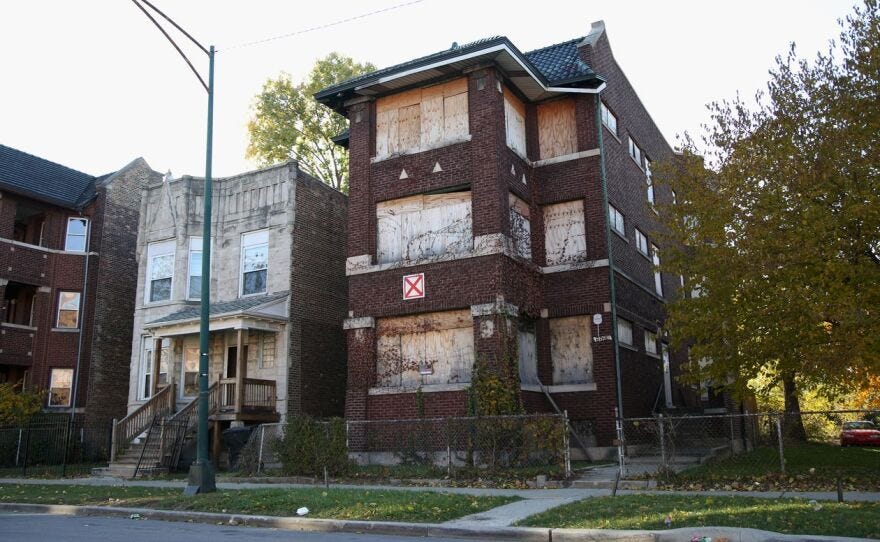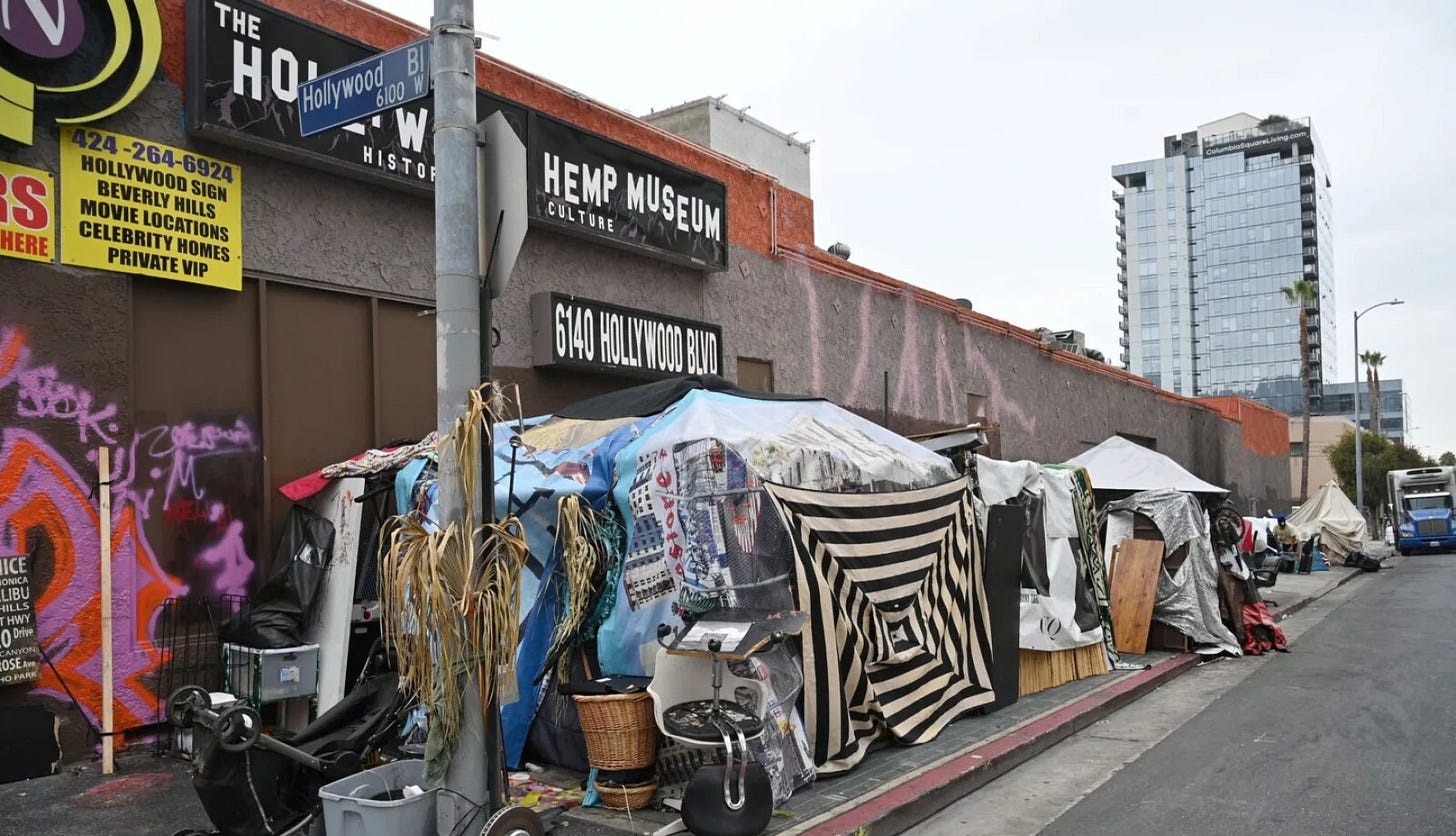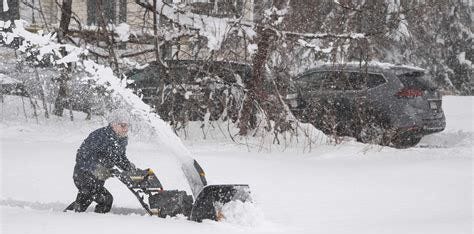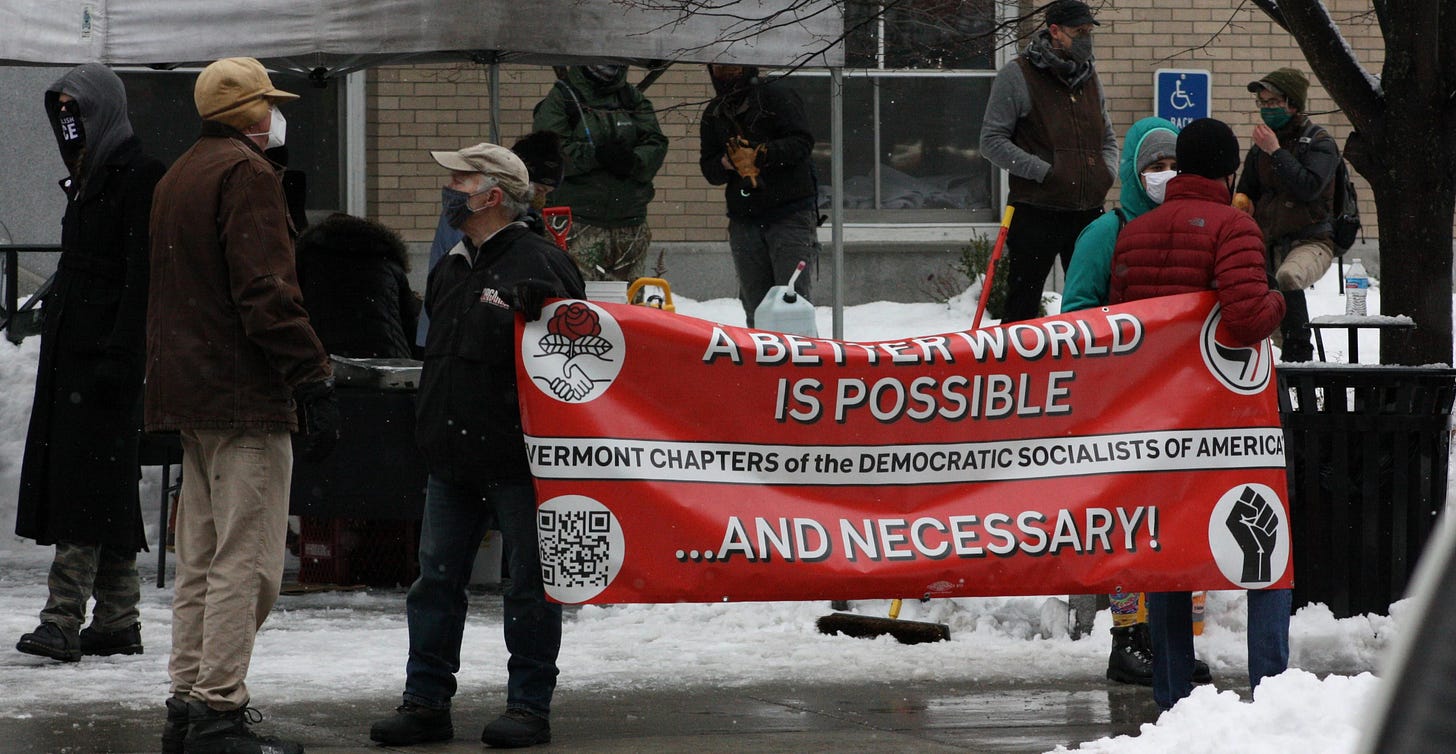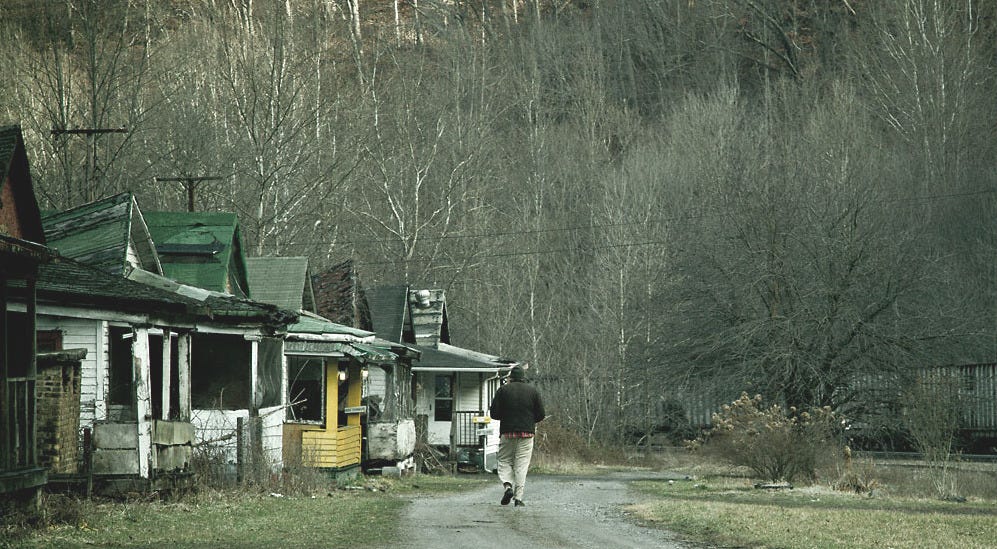I previously posted on the 12 states that are most desirable in terms of liberty, affordability, quality of life, and weather. This post complements that analysis by naming the states that are least desirable by the same metrics, states that libertarians and other pro-liberty types should not consider moving to and should possibly even leave, given that there are much better places to live.
CATO annually ranks all fifty US states in terms of freedom. However, when considering a move, there are other factors than liberty to take into account, such as weather, cost of living, etc. This post combines these various considerations in one analysis. Below are the ten states that should be avoided.
Illinois: The Crappiest State in the US
Only one state scores in the bottom twenty across all four measures examined: Illinois. It ranks #39 in liberty, #35 in affordability, #38 in quality of life, and #30 in weather. Every other US state has at least one redeeming feature, but not this one.
Illinois residents bear one of the highest overall state tax burdens in the US. Property, income, and sales taxes are all high. However, because it’s also one of the most corrupt states, there is little to show for all that money. It’s not even clear how much longer the state government will remain solvent. US News ranks it’s fiscal stability at #50, dead last among US states. Years of crooked Democrat rule have taken their toll.
Partly because its high taxes drive away business and jobs, Illinois’ economy ranks #42. On top of that, much of the state’s infrastructure is overdue for improvement, but high public sector pension debt is straining the state’s budget, so there is no money for actual things that are needed.
And then, of course, there is the weather — harsh winters in Illinois bring heavy snow, ice, and subzero temperatures, while summers are hot, humid, and prone to severe thunderstorms and tornadoes.
Chicago, the largest city in Illinois, can be charming, at least parts of it, but living there can be dicey, particularly if you regularly use public transport. The city is notable for violent crime, ranking #14 out of the 100 largest US cities for murder.
You would think with all that, that Illinois would at least be cheap. But no. Cost of living in Illinois is slightly higher than average among US states.
Per Grok, Illinois is one of the five states people most regret moving to. High taxes, crime concerns, and job scarcity contribute.
Illinois residents can make their lives much better by moving to almost any other state not on this list, but most notably these.
New York: The Least Free State in the US
New York ranks #50 in liberty — the least free state in the US, #47 in affordability — one of the most expensive states to live in, and #36 in weather.
What makes New York so unfree? Well, for starters it has the highest overall tax burden of any state.
Additionally, per Cato, it’s one of the worst states for aggressive regulatory policy. Land-use freedom rates very poorly, primarily because of tough rent control in New York City. Eminent domain remains unreformed. Certificate-of-need laws exist for both hospitals and moving companies. These regulations are typical of the state’s predatory attitude toward property and business.
In terms of personal liberty, the state has something of a “paternalistic-at-gunpoint” attitude. Tobacco control is the second worst in the country because of smoking bans and high taxes. The state also has a vaping ban. New York is perhaps the worst state for home-schoolers, and it has no private school choice programs and only a meager public program.
New York State's weather is often harsh, with frigid winters bringing heavy snow and ice, making travel treacherous. Summers are humid and hot, with frequent thunderstorms. Coastal areas face hurricanes, while upstate endures lake-effect blizzards, challenging residents year-round.
And for all that, New York is the 4th most expensive state to live in.
Per Grok, New York is one of the five states people most regret moving to. Expensive housing and urban challenges lead to regret, especially in New York City.
New Jersey: New York Without the Glitter
New Jersey has nearly the same ranking as New York in the same measures. It’s #47 in liberty — one of the least free states in the US, #48 in affordability — one of the most expensive states to live in, and #35 in weather.
What makes New Jersey so unfree? Pretty much the same things that make New York unfree, most notably the overall tax burden. New York is #1 and New Jersey is #2 in overall highest taxes (see New York graphic above).
Additionally, per Cato, “The Garden State is a regulatory nightmare, coming in dead last; it performs poorly on personal freedom as well.”
New Jersey's weather is often unpleasant, with bitterly cold winters and heavy snowfall, causing hazardous road conditions. Summers are oppressively humid and hot, with frequent thunderstorms and occasional hurricanes along the coast. Flooding risks persist, challenging residents throughout the year.
New Jersey is the third most expensive state to live in.
Per Grok, New Jersey is one of the five states people most regret moving to. High taxes and living expenses drive this, with 70% of those moving reporting that they are leaving the state.
California: The Least Affordable State in the US
California ranks #48 in liberty, #50 in affordability — the least affordable state in the US, and #37 in quality of life. That said, it seduces many to move there with enviable weather, ranked #2.
Per Cato, California is one of the least free states in the US. Despite Proposition 13, California still has some of the highest taxes. Additionally, California is one of the worst states on land-use freedom. Some of the state’s cities have rent control, new housing supply is tightly restricted in the coastal areas despite high demand, and eminent domain reform has been minimal. Labor law is anti-employment, with no right-to-work law, high minimum wages, strict workers’ compensation mandates, mandated short-term disability insurance, stricter-than-federal anti-discrimination law, and prohibitions on consensual non-compete agreements. California is one of the worst states for consumers’ freedom of choice in homeowner’s and automobile insurance. Not surprisingly, it’s one of the four bluest states in the US.
On top of all that and because of it, California is the most unaffordable state in the US.
You would think only the rich would be living there. But no, because of generous welfare, plus the weather, nearly one in four homeless people in the US live in California. The result is a bizarre, often dystopian, atmosphere in the state’s larger cities in particular, in which wealthy tech titans, Hollywood execs, and well-to-do retirees exist amongst third-world squalor in the street just outside their locked doors.
The state may also be irredeemable for the simple reason that Democrats have corrupted the election process to the point that no one knows how legitimate elections really are — California ranks #49 in election integrity. And election reform, which could only be achieved democratically, is made difficult by that very corruption.
Per Grok, California is one of the five states people most regret moving to. High living costs, traffic congestion, and wildfire risks are often cited.
Hawaii: Paradise Lost
Hawaii ranks #49 in liberty, #49 in affordability, and #34 in quality of life. That said, if you can afford it, its weather is ranked #1.
The photo below is real. It’s expensive to live in Hawaii. “Kauai’s $13 bread is even more expensive than on Lanai, where the same bread was $11.79.” Cost of living is exceptionally high — the second highest in the nation — in part because so much has to be imported and also reflecting high real estate prices, with a median home price of roughly $850K and median rent of $3,100.
Per Cato, Hawaii is also the second least free state in the US. Hawaii’s fiscal policy is decidedly tax and spend. The overall tax burden is high and Hawaii does poorly in almost every area of regulatory policy, but its two worst categories are land-use and labor-market freedoms. It has among the strictest restrictions on residential building in the country. Eminent domain abuse is virtually unchecked by law. It has no right-to-work law, and it has strict workers’ compensation mandates, a short-term disability insurance mandate, and a stricter-than-federal anti-discrimination law.
In places, Hawaii has a third world feel, with wealthy people amidst very poor people, not the most comfortable or safe situation. While California ranks #1 in total homeless population, concentrated mostly in the big cities, Hawaii ranks #1 in homeless population per capita. Adding to the third world feel is resentment in rural parts of the state to mainlanders, particularly white mainlanders.
Hawaii ranks #50 — dead last — in election integrity, so likewise similar to California, it may be irredeemable through the election process.
Oregon: It Wanted to “Stay Weird” and It Did
Oregon ranks #46 in liberty, #41 in affordability, and #31 in quality of life.
Per Cato, Oregon is among the worst states on economic freedom. Taxes are relatively high and land use is more regulated than in most other states, including among other things a statewide rent growth cap. Oregon’s labor policy is generally anti-employment, with one of the highest minimum wages in the country relative to the median wage, no right-to-work law, and comprehensive workers’ compensation mandates. The state has an anti-price-gouging law, household moving certification, and certificate-of-need requirements for hospitals.
The largest city in Oregon — Portland — is something of a left-wing bastion. Over the past decade, the city has experienced significant unrest tied to BLM and Antifa activities. Protests have involved violence, including assault, arson, vandalism, doxing, and property damage. In 2020, leftists briefly claimed territory, the "Red House Autonomous Zone,” in which they occupied private property, setting up barricades and booby traps. Earlier, Antifa groups controlled areas like the waterfront, patrolling with weapons. The city remains a flashpoint for leftist causes. Antifa, which officially doesn’t exist, seems to have its homebase in Portland.
The state is ranked #31 in quality of life, thanks to poor scores in crime, education, and economic opportunity. Additionally, Oregon is not a cheap place to live. The state ranks #41 in affordability.
On the plus side, the redder, more rural eastern part of the state is trying to break away and become part of Idaho. It’s an effort that seems unlikely to succeed, but it says something good about the people in that part of the state that they are trying.
Oregon ranks #47 in election integrity, so it likewise may be irredeemable through the election process.
Rhode Island: Highly Regulated, Cold and Expensive
Rhode Island ranks in the bottom twenty states across three measures. It’s #36 in liberty, #37 in affordability, and #38 in weather.
When I think of Rhode Island, I think of the Kennedys, who have long vacationed here, or John Kerry sailing into harbor on his private $4M yacht. Rhode Island is one of those states that are a magnet for wealthy Democrats. Its yacht-filled harbors and private clubs cater to elite grifter tastes.
Per Cato, Rhode Island’s state and local taxes are high and its regulatory policy has been bad for the past two decades. Land-use freedom is rated low because of exclusionary zoning and eminent domain abuse. Labor policy is also anti-employment, with a high minimum wage, no right-to-work law, a short-term disability insurance mandate, a stricter-than-federal anti-discrimination law, and a paid family leave mandate. Health insurance freedom is poor and even includes a state-level individual mandate. A price-gouging law was enacted in 2011. Medical facilities and moving companies face entry restrictions. Rhode Island ranks dead last on asset forfeiture. Gun laws in the state are extremely restrictive.
Rhode Island’s coastal location brings humid summers, with temperatures hitting the 90s, and harsh winters averaging 20-30°F, worsened by biting winds. Nor’easters and blizzards dump heavy snow. Frequent rain — over 40 inches annually — breeds damp, dreary days, especially in spring and fall. Fog reduces visibility, complicating travel. Rapid weather shifts, from sunny to stormy in hours, frustrate residents, making consistent outdoor planning a challenge.
Connecticut: Also Highly Regulated, Cold and Expensive
Connecticut ranks in the bottom twenty states across three measures. It’s #33 in liberty, #42 in affordability, and #37 in weather.
Per Cato, Connecticut does poorly in most areas of regulatory policy. Exclusionary zoning is common and eminent domain for economic development is largely unchecked. Renewable portfolio standards are tight, keeping electric rates high. The state has a high minimum wage and lacks a right-to-work law. Educational freedom is subpar, with no private school choice. And gun rights have been sharply restricted for the last two decades, with may-issue carry, an assault weapons ban, a large-capacity magazine ban, purchaser licensing, universal background checks, and registration of some firearms.
Connecticut’s weather is often noted for its unpredictability and extremes. The state experiences humid, hot summers with temperatures reaching the 90s and harsh winters with heavy snow and ice storms, like the 2013 blizzard that dumped over 30 inches. Coastal areas face nor’easters, causing flooding and power outages. High humidity exacerbates discomfort, and frequent rain—averaging 50 inches annually—leads to damp, dreary days.
If that’s not enough to steer you clear, it’s the ninth most expensive state to live in.
Per Grok, Connecticut is one of the five states people most regret moving to. High costs and limited job opportunities frustrate newcomers.
Vermont: The State That Elected Bernie Sanders
Vermont ranks in the bottom twenty states across three measures. It’s #42 in liberty, #31 in affordability, and #40 in weather.
Per Cato, Vermont is one of the highest-tax states in the country and one of the most highly regulated. It is also among the worst states on land-use and energy freedom. The state has done little to restrain eminent domain for private gain. On labor policy, the state has a very high minimum wage compared with local market wages. Not surprisingly, it’s one of the four bluest states in the US.
Vermont has a long history of socialist activity, one of the more notable victories being Bernie Sanders’ 1981 mayoral win in Burlington as a self-described socialist. The Vermont Progressive Party, formed in the 1980s, remains active, holding seats in the state legislature. The Green Mountain Peace and Justice Party and Green Mountain Democratic Socialists of America (DSA), endorse socialist candidates and issues like healthcare reform.
While you’re being taxed to death you can freeze as well. Vermont ranks #40 in weather, and its winters are not for the faint of heart — long, cold, and snowy, with temperatures often dropping below 0°F and heavy snowfall sometimes exceeding 80 inches annually. Spring brings unpredictable mud seasons, with thawing snow creating messy, impassable roads. Summers are humid and can see sudden thunderstorms, while Fall, though scenic, is brief and prone to early frosts. The state’s rural nature and mountainous terrain amplify weather impacts, complicating infrastructure maintenance and emergency response.
Vermont ties Oregon to rank #47 in election integrity, so it likewise may be irredeemable through the election process.
West Virginia: A State of Depression
West Virginia ranks in the bottom twenty states across three measures. It’s #32 in liberty, #46 in quality of life, and #33 in weather. But it’s a relatively cheap place to live, ranking #5 in affordability.
If depression were a state, it would be West Virginia. It has low per capita income, a high poverty rate (17.9% overall, 25% for children in 2022), the nation’s lowest life expectancy (72.8 years in 2020), high obesity (41%) and a high smoking rate (21%). Additionally, education outcomes are weak, with low college attainment (20% of adults) and poor school performance.
The states ranks below average in overall liberty, per Cato, and weather is often unpredictable. Harsh winters bring heavy snow and ice, while summers are humid and prone to sudden thunderstorms. Frequent fog and rain reduce visibility, complicating travel. The state's mountainous terrain amplifies these issues, creating challenging and inconsistent weather patterns year-round.
How Big An Improvement Would Leaving These Get You?
I previously posted on the 12 states that are most desirable in terms of liberty, affordability, quality of life, and weather. The table below compares median values for the ten worst states listed above vs. the twelve most desirable states. The differences are stark: moving out of these states would result in sharply improved liberty (lower taxes, more gun and school choice, etc.) — median rank of #8 vs #44, sharply improved affordability — median rank of #28 vs #42, sharply improved quality of life — median rank of #16 vs #28, and sharply improved weather — median rank of #17 vs #34.
If you’re in any of the ten worst states, you would benefit a great deal from a little travel to the best states to see what you are missing.




